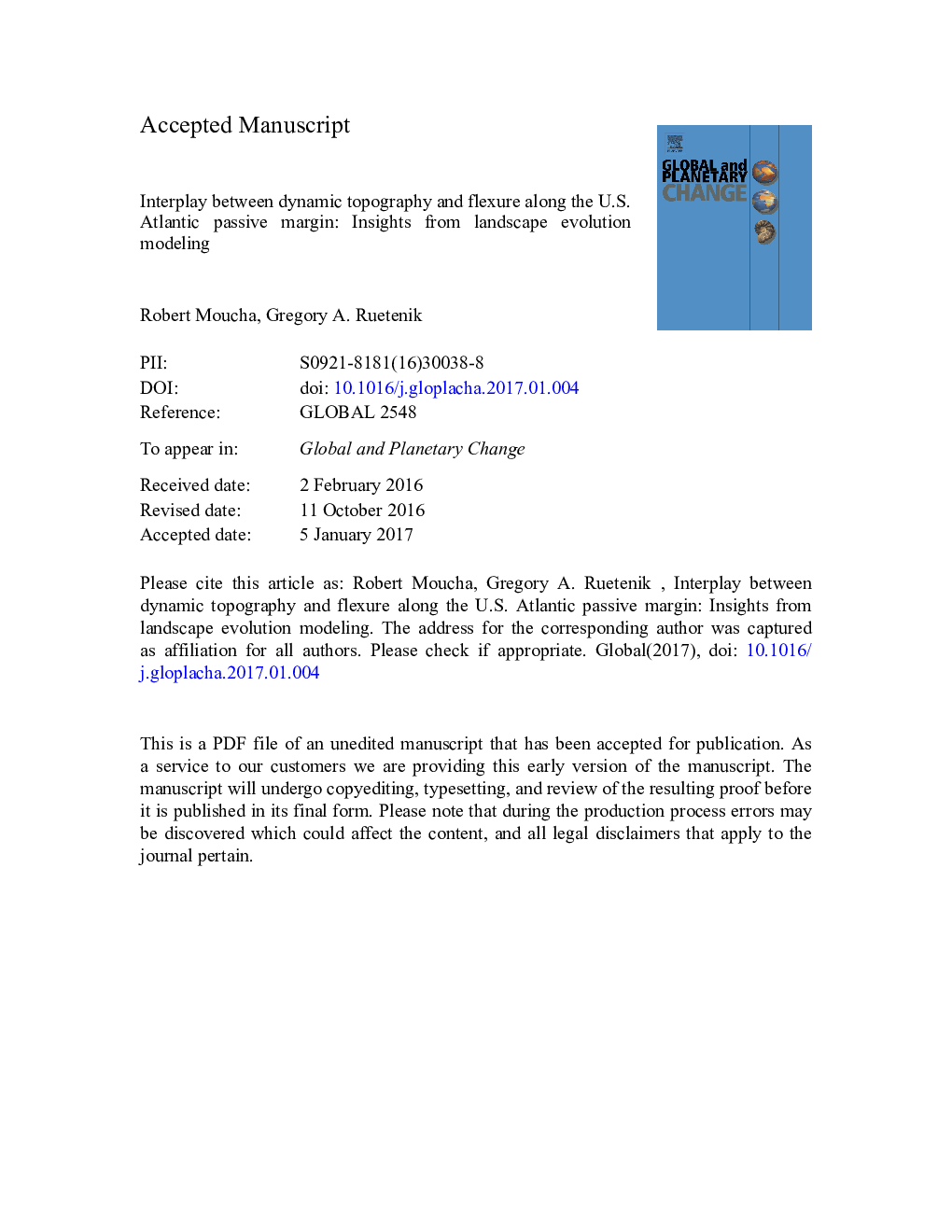| Article ID | Journal | Published Year | Pages | File Type |
|---|---|---|---|---|
| 5755296 | Global and Planetary Change | 2017 | 26 Pages |
Abstract
Global backwards-in time models of mantle convection have resulted in vastly different interpretations of the transient state of dynamic topography on the U.S. Atlantic passive margin (Moucha et al., 2008; SpasojeviÄ et al., 2008; Rowley et al., 2013; Rovere et al., 2015). However, reconciling these geodynamic models with the observed offshore sedimentary record directly is complex because the sedimentary record integrates changes in climate, sea level, lithology, and tectonics. To circumvent this, we instead focus on modeling the observed deformation of the Orangeburg scarp, a well-documented 3.5 million year old mid-Pliocene shoreline (e.g. Rovere et al., 2015). Herein, we present results from a new landscape evolution model and demonstrate that flexural effects along this margin are comparable to changes in dynamic topography (Rowley et al., 2013) and are required to fully explain deformation of the Orangeburg scarp. Moreover, using the Orangeburg scarp as a datum subject to glacial isostatic adjustment, we demonstrate that a 15 m mid-Pliocene sea level above present-day is most consistent with interspersed coastal plain sediment and surface deformation derived from mantle convection and flexural-isostasy.
Related Topics
Physical Sciences and Engineering
Earth and Planetary Sciences
Earth-Surface Processes
Authors
Robert Moucha, Gregory A. Ruetenik,
